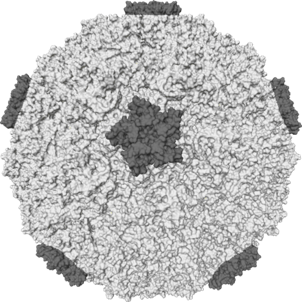By Emma Joy Goldberg
It’s that time of year again! The time of year when, one by one, your friends, teachers, sisters, brothers, moms and dads come down with that dreaded weeklong cold! That’s right, it’s cold season! Traditional symptoms of the common cold that no one seems able to escape include a runny nose, a sore throat, a cough and a general feeling of tiredness. Colds, or non influenza-related upper respiratory infections, are among the world’s most common spreadable bugs and it’s thought that children can get up to 12 colds per year! Knowing these facts, it seems safe to assume that scientists would have a cure for this common weeklong annoyance that plagues us all every winter. Sadly, you’d be mistaken! Luckily for us, scientists at Harvard University, the Imperial College of London and Stanford University have been working hard to try and understand and successfully treat that pesky cold so that we never have to miss another day of school!
So, what, exactly, makes the common cold so difficult to cure? What is the latest research? And is there any hope?
Before we get down to the latest research on curing the cold front, we need to understand what the “common cold” really is. At least 50% of colds result from rhinovirus infections, but there’s not just one rhinovirus that can make our noses run – there are over 160! This means that the cold that keeps your friend home from school is most likely not the same cold that will keep you home from school! In order to cure the “common cold”, scientists need to create a drug that can successfully target and kill over 160 individual viruses! And the challenge doesn’t stop there: these 160+ rhinoviruses are also great mutators, meaning they develop drug resistance quickly and then easily escape our immune systems and most vaccines.
Recently, however, research scientists at Stanford University identified a way to stop enteroviruses – a family of viruses that includes rhinoviruses, poliovirus and others – from replicating in human cells grown in the lab and in mice! Like other viruses, enteroviruses use proteins and enzymes from infected host cells to survive and replicate. So, these scientists decided to grow human cell lines that are easily infected by enteroviruses and genetically “knockout”, or delete, one protein at a time to see what would happen! After testing hundreds of target proteins, one protein stood out to the scientists: SETD3. Although little is known about SETD3, the scientists found that multiple enteroviruses including three different rhinoviruses, were unable to replicate without it! Further, mice that had the SETD3 protein genetically deleted were protected from infections when they were exposed to multiple enteroviruses!
This finding suggests that temporarily disabling the SETD3 protein could protect us from catching the common cold! The next step for scientists will be developing a drug that specifically targets and temporarily disables SETD3. If, and hopefully when, successful, this could lead to a simple vaccine that could prevent the pesky common cold!
Edited by Sarah Brotman and Carolina Herrera

